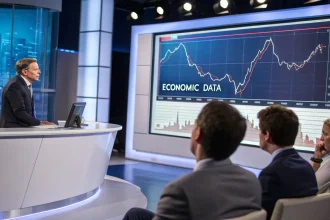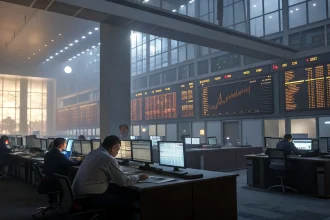Reserve Bank of India (RBI) Governor Sanjay Malhotra addressed the current state of the Indian economy amid challenging global conditions, highlighting that domestic growth remains on track despite international headwinds.
According to Malhotra, the Indian economy continues to demonstrate remarkable resilience, maintaining a steady growth rate of 6.5% in line with earlier projections. This stability comes at a time when the global economic landscape faces significant uncertainty driven by ongoing trade negotiations and escalating geopolitical tensions.
While acknowledging these external challenges, the RBI Governor noted that there have been some improvements in the global economic outlook, primarily attributed to two key factors: the front-loading of exports by various countries and fiscal expansion measures implemented by governments worldwide.
Global Economic Landscape
The international economic environment remains complex, with trade negotiations between major economies creating market volatility. These discussions, coupled with geopolitical conflicts in various regions, have contributed to unpredictable economic conditions globally.
Despite these challenges, Malhotra observed that several economies have adapted by accelerating their export schedules—a strategic move to mitigate potential disruptions from changing trade policies. Additionally, fiscal expansion has emerged as a common tool among nations seeking to stimulate growth amid uncertainty.
India’s Economic Performance
The domestic economy has shown remarkable stability against this backdrop of global uncertainty. The 6.5% growth rate mentioned by Malhotra represents one of the highest among major economies, positioning India as a bright spot in the global economic landscape.
This growth trajectory aligns with the RBI’s earlier forecasts, suggesting that the central bank’s monetary policies have been effective in navigating external pressures while supporting domestic economic activity.
Key factors contributing to India’s economic resilience include:
- Strong domestic consumption patterns
- Continued infrastructure development
- Growth in manufacturing and service sectors
- Stable monetary policy framework
Policy Implications
The RBI Governor’s assessment suggests that current monetary policies are likely to remain consistent in the near term, with a focus on maintaining growth while keeping inflation in check. The central bank appears confident in its approach despite external pressures.
“The domestic economy is growing as projected,” stated Malhotra, indicating that no major policy adjustments are immediately necessary to address growth concerns.
Analysts note that this stability provides the RBI with flexibility to respond to global developments without making dramatic policy shifts that could disrupt domestic economic momentum.
The central bank’s ability to maintain projected growth rates while navigating global uncertainties demonstrates the effectiveness of its policy framework and the underlying strength of India’s economic fundamentals.
As trade negotiations continue and geopolitical situations evolve, the RBI appears positioned to adjust policies as needed to protect domestic growth while remaining responsive to international economic developments.









